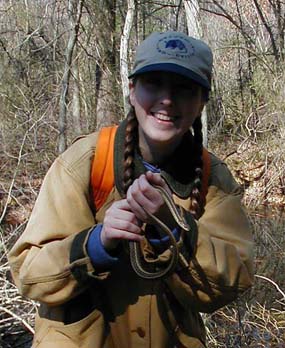
Sarah and the snake she caught with
her bare hands.
B.A.: Biology, Connecticut College
Ph.D.: In progress
- Dissertation research: The Phylogeny of Nama (Hydrophyllaceae) and the Evolution of Gypsophily.
Contact: sarah.jackson at mail.utexas.edu
Sarah is investigating the phylogeny of the genus Nama (Hydrophyllaceae), using DNA sequence data, with the goal of answering some interesting questions about its biogeography and the evolution of its gypsophilous species. Here's an abstract from Botany 2007:
|